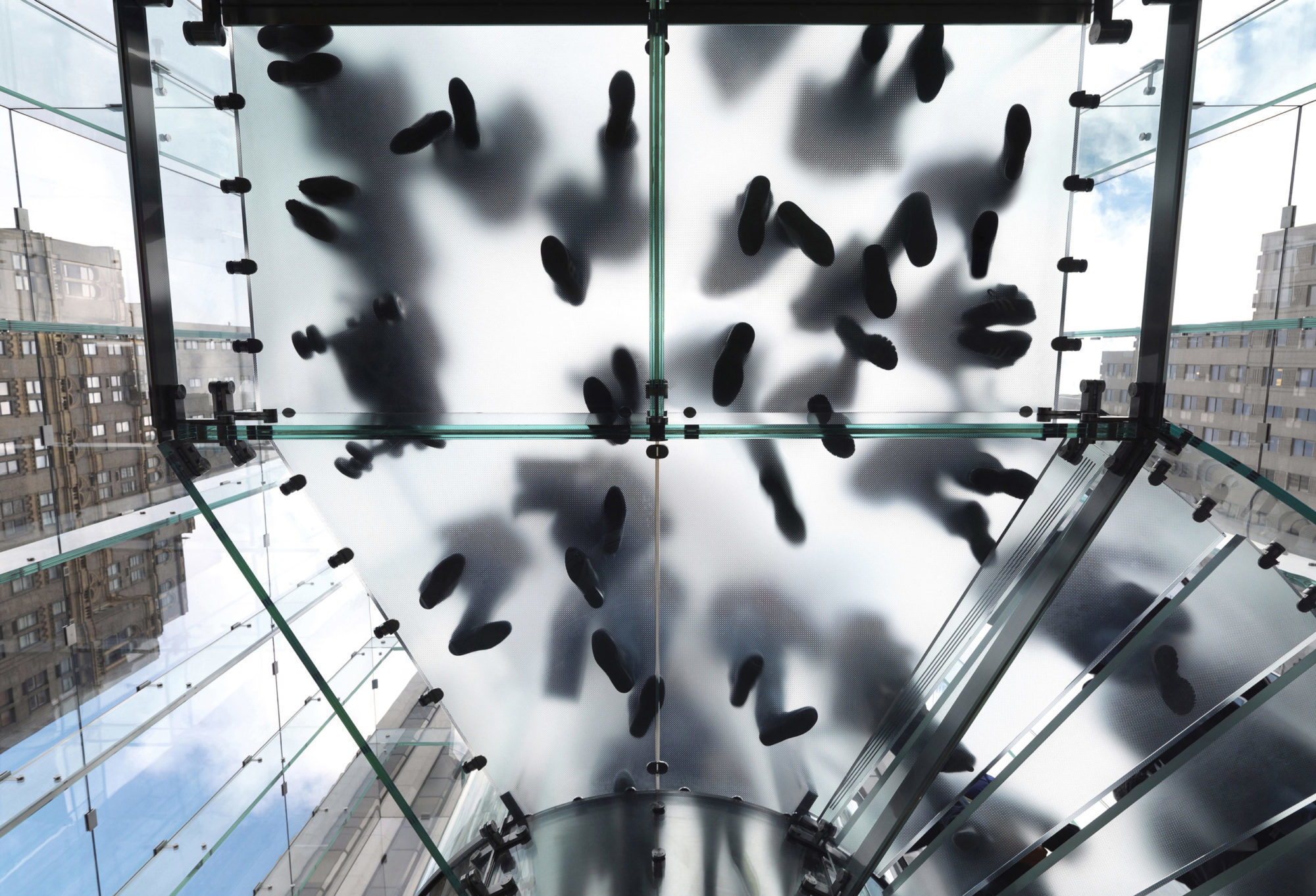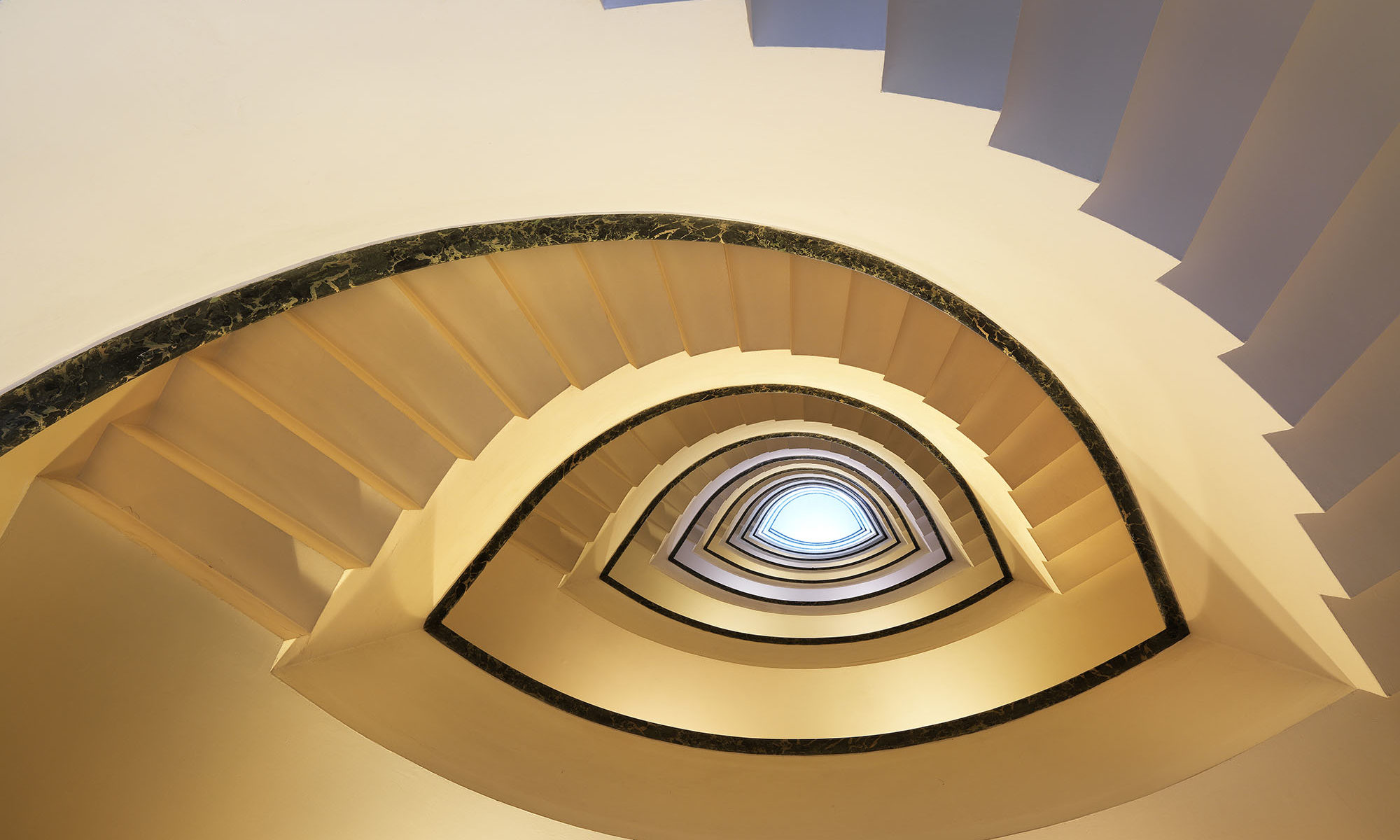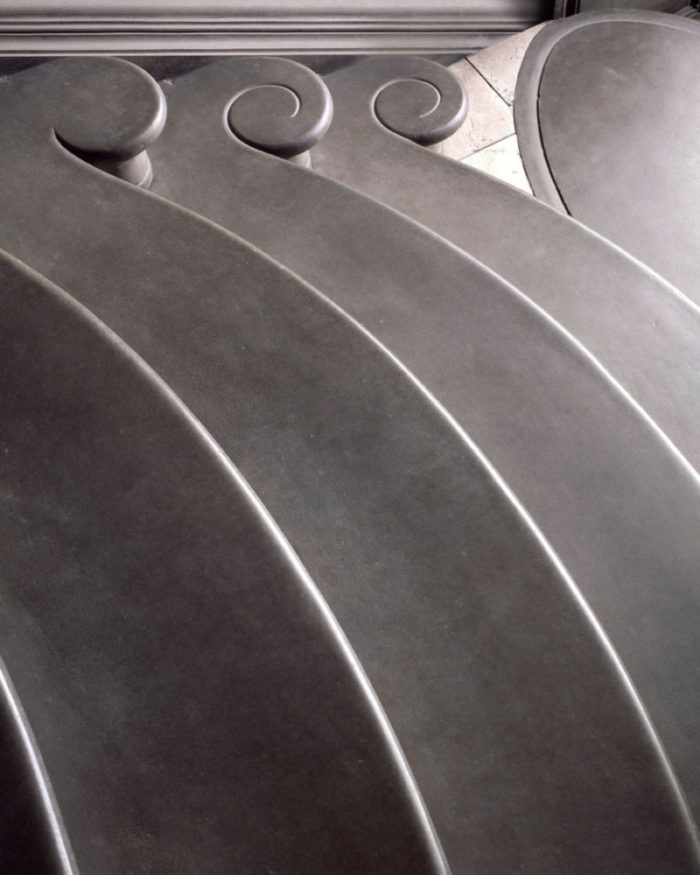
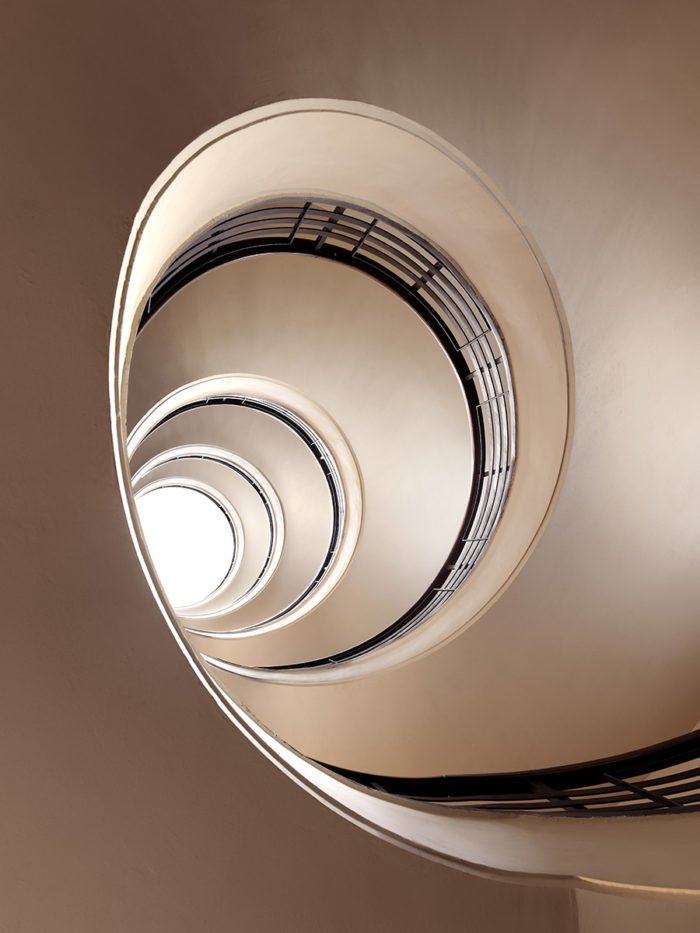
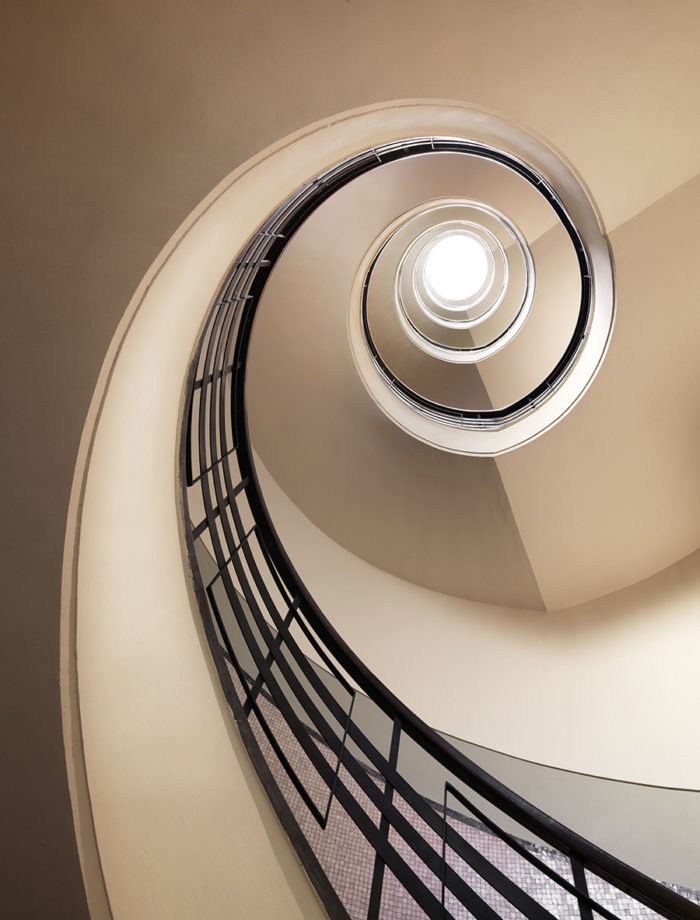
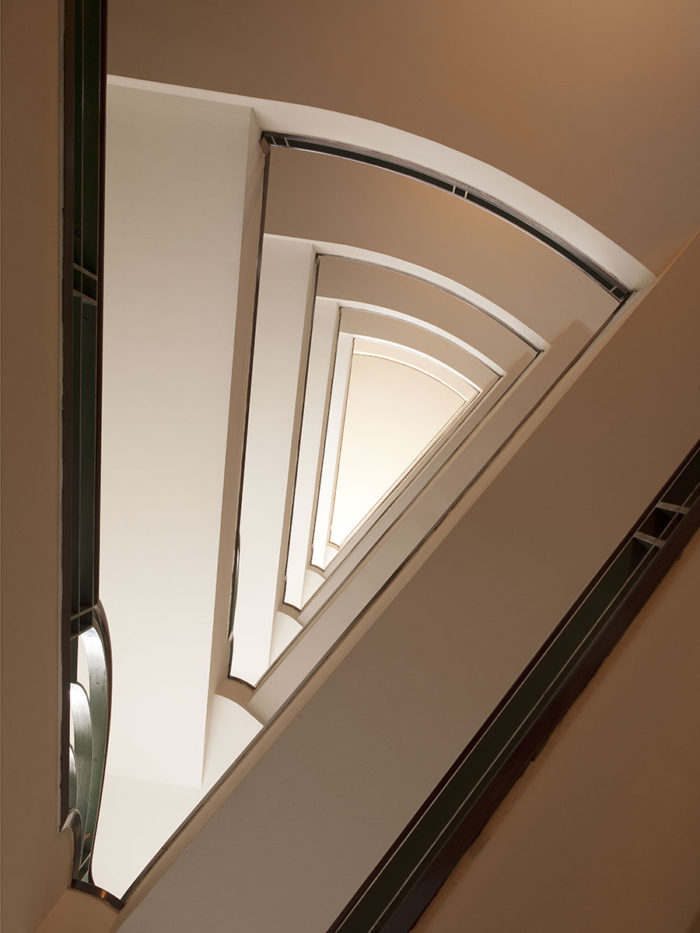
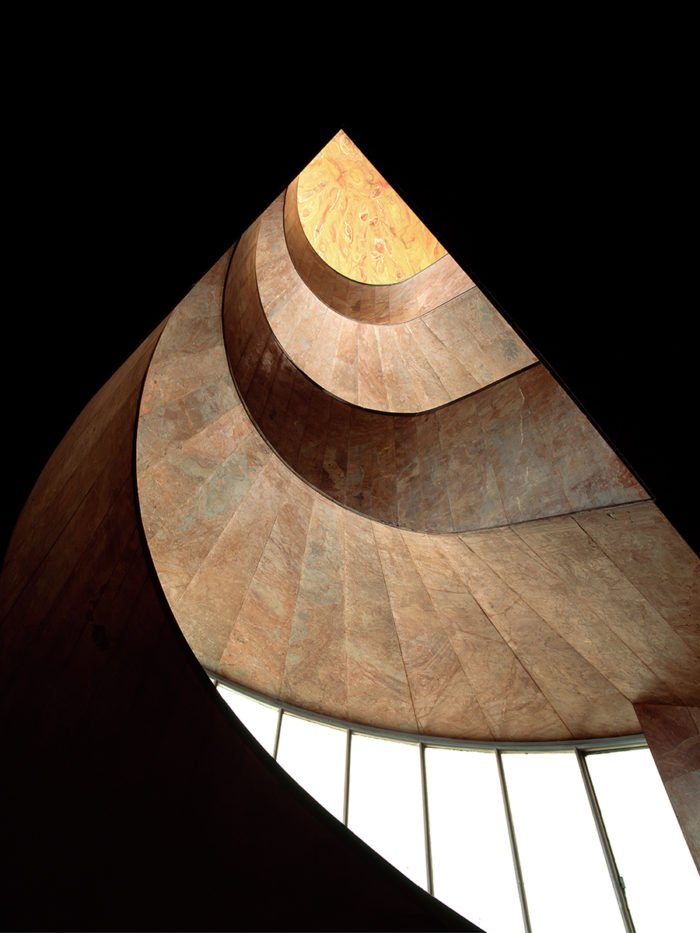
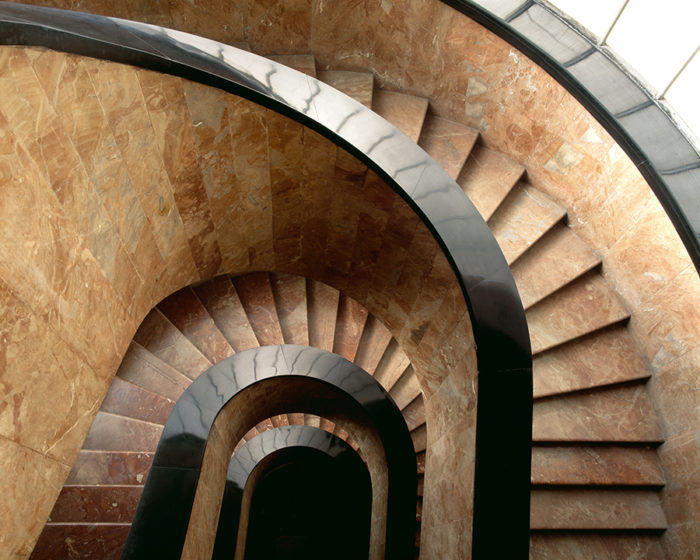
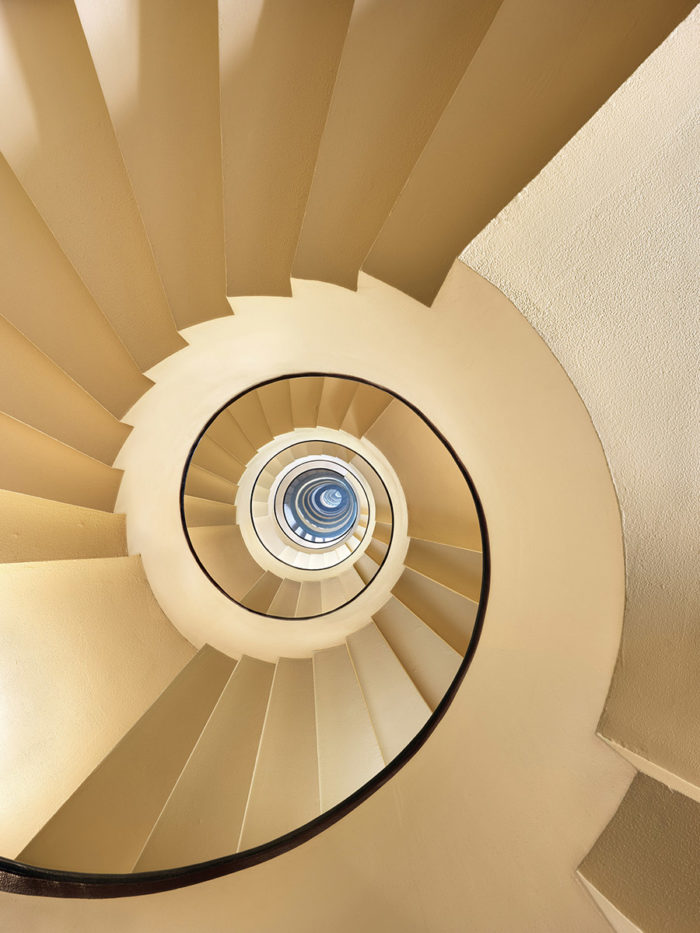
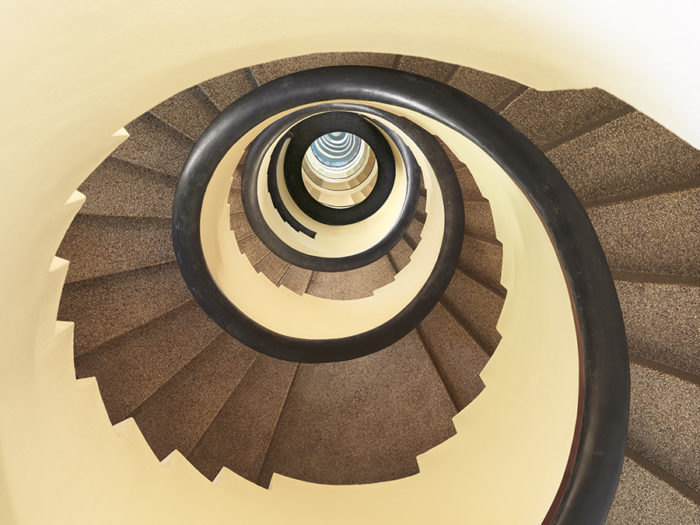
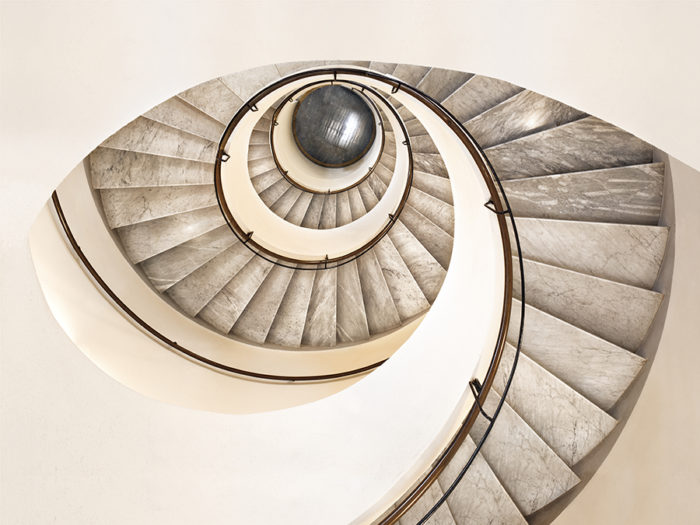
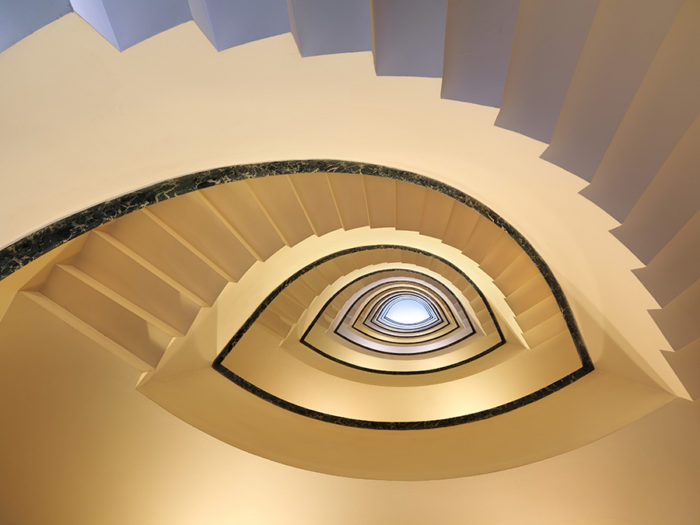
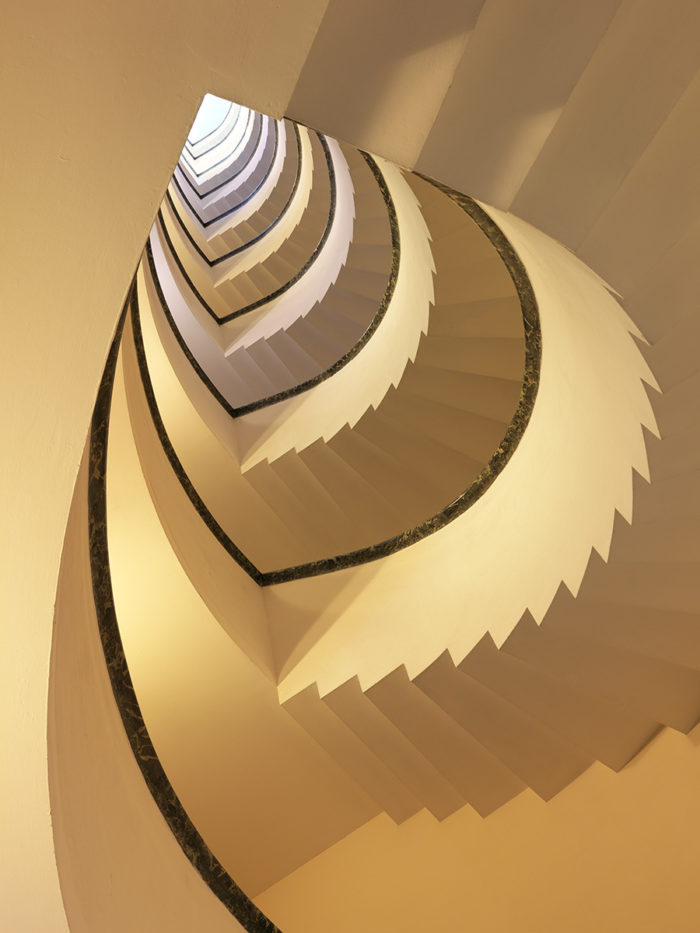
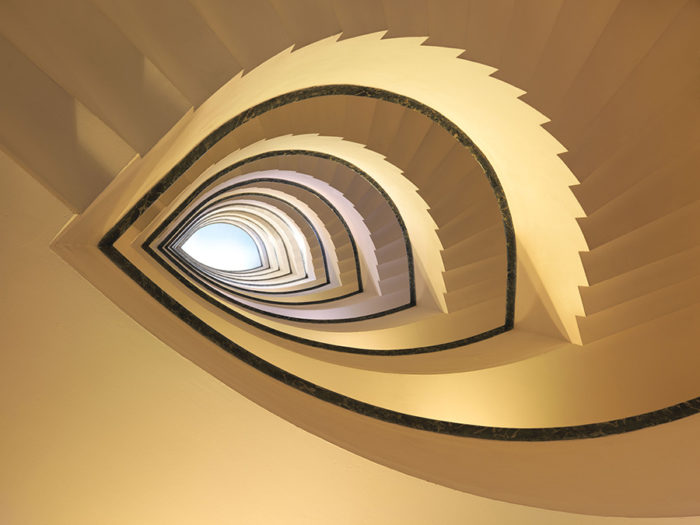
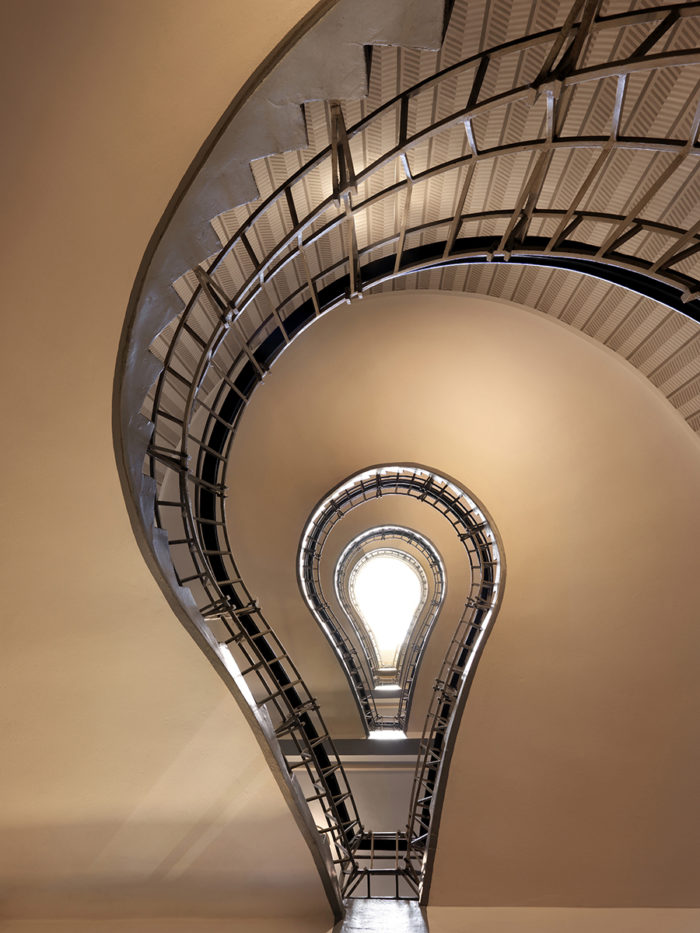
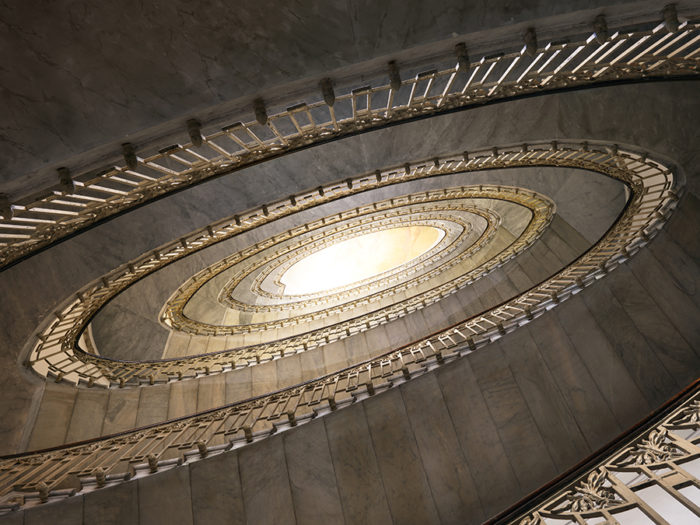
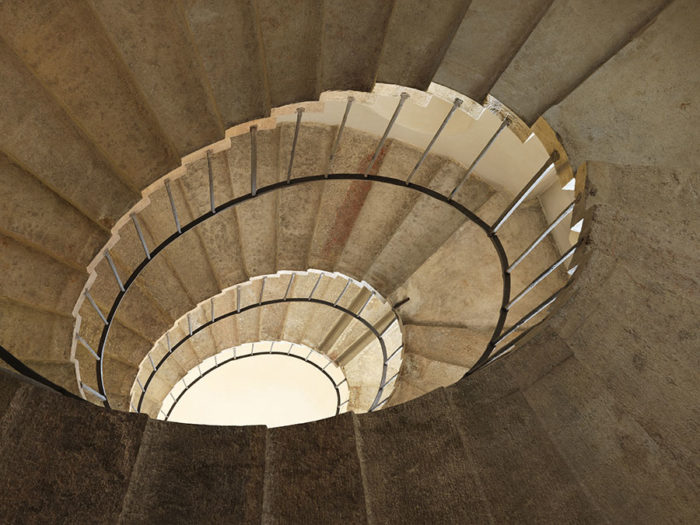
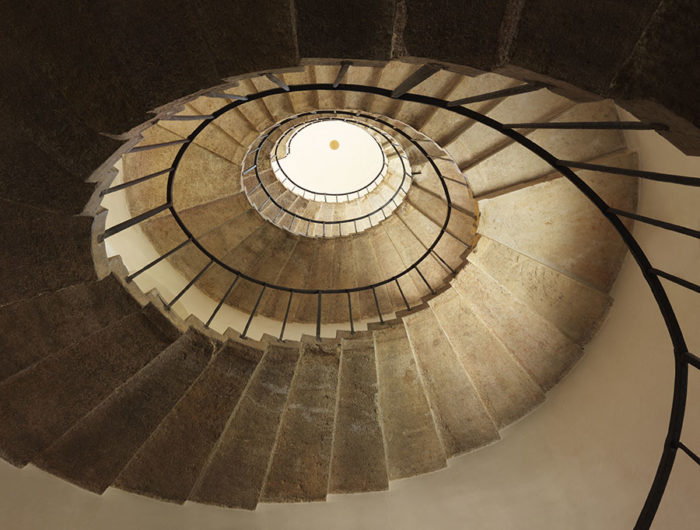
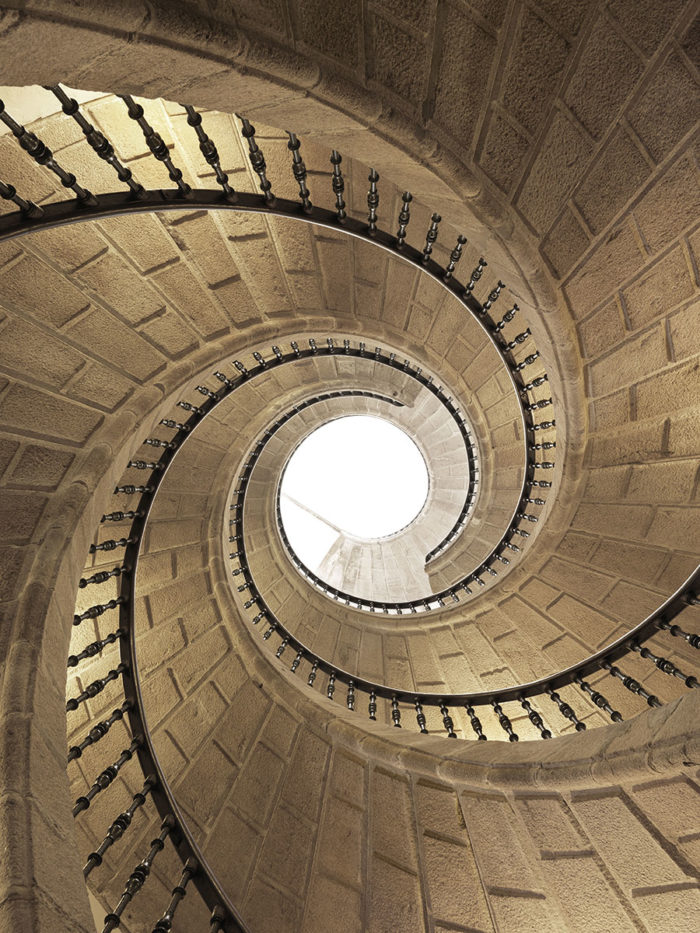
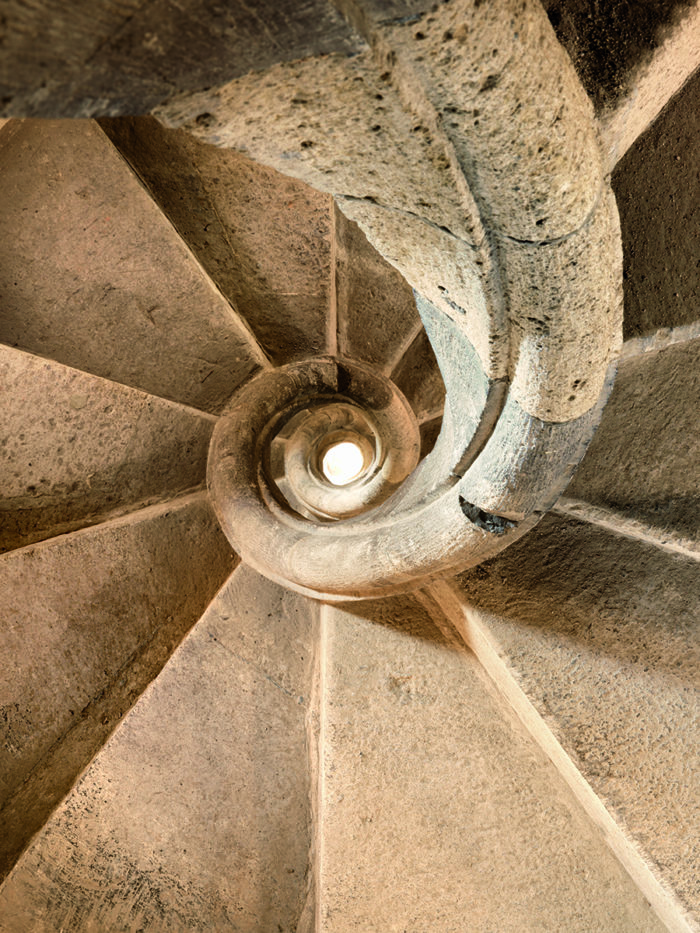
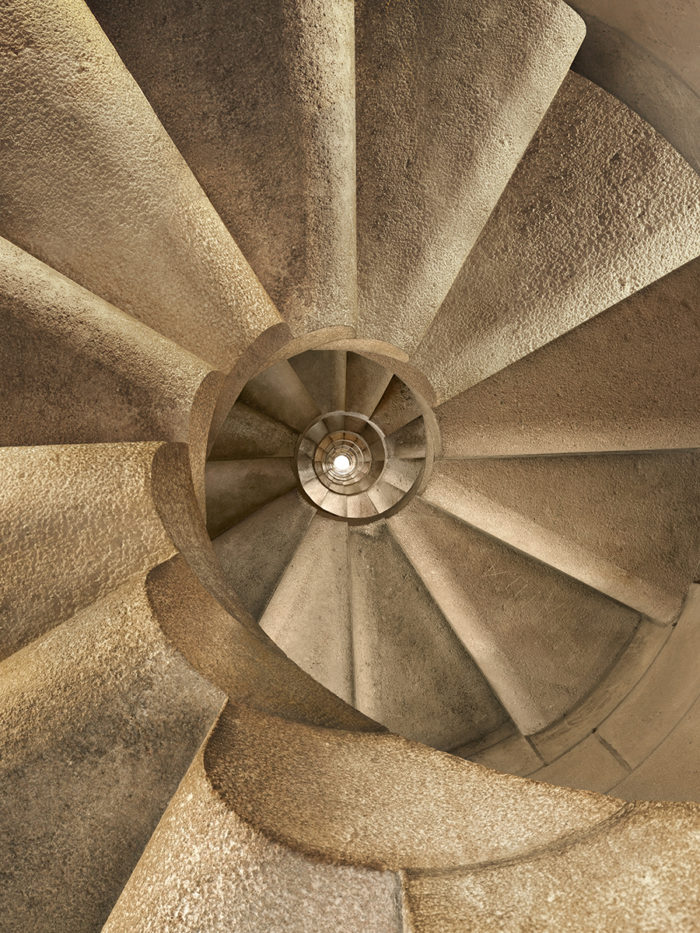
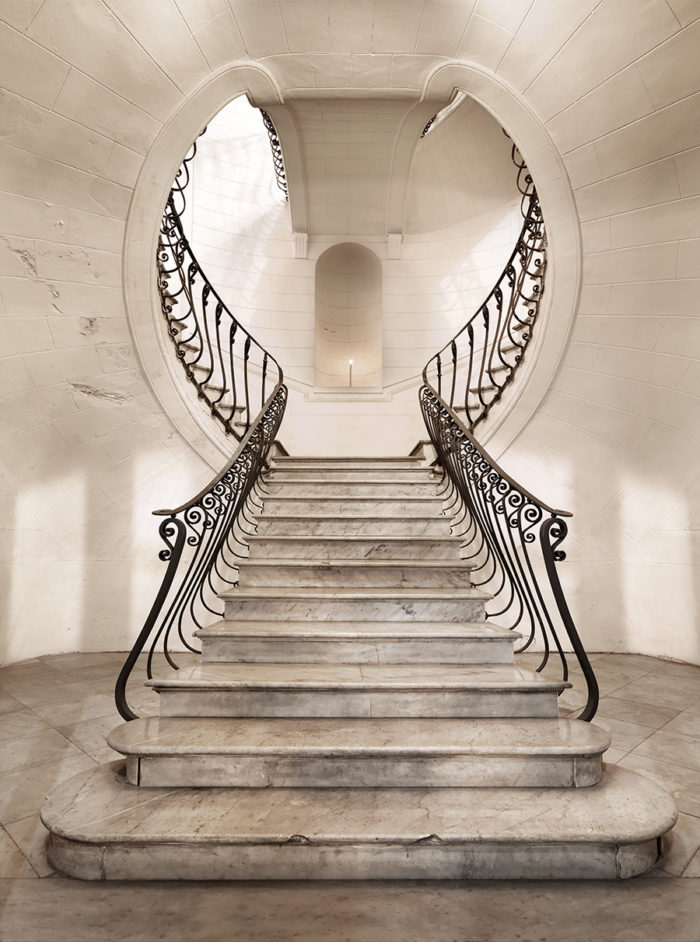
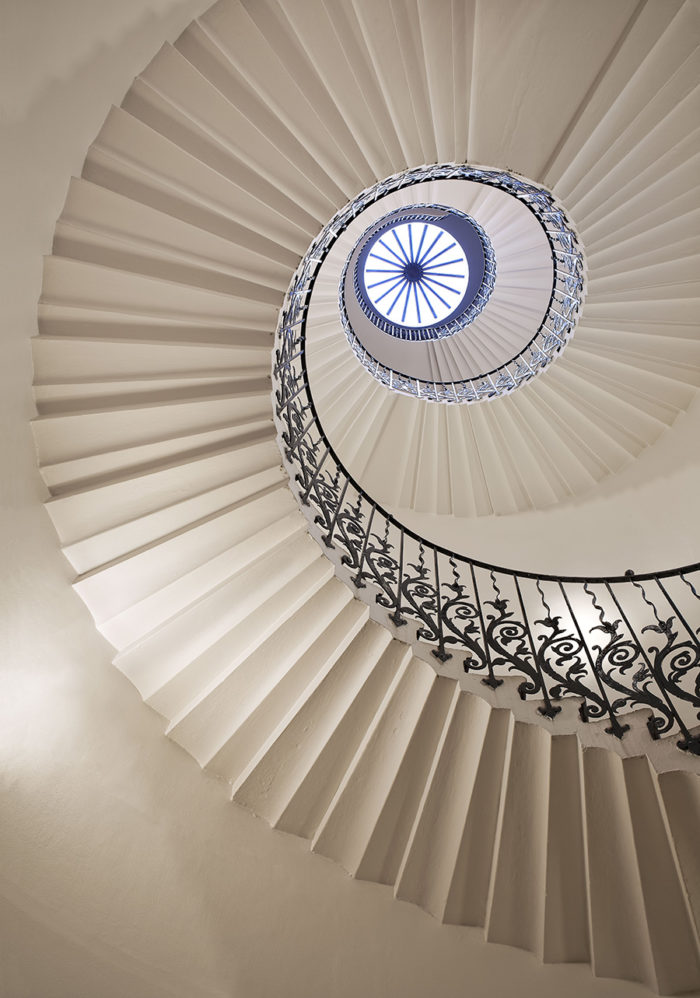
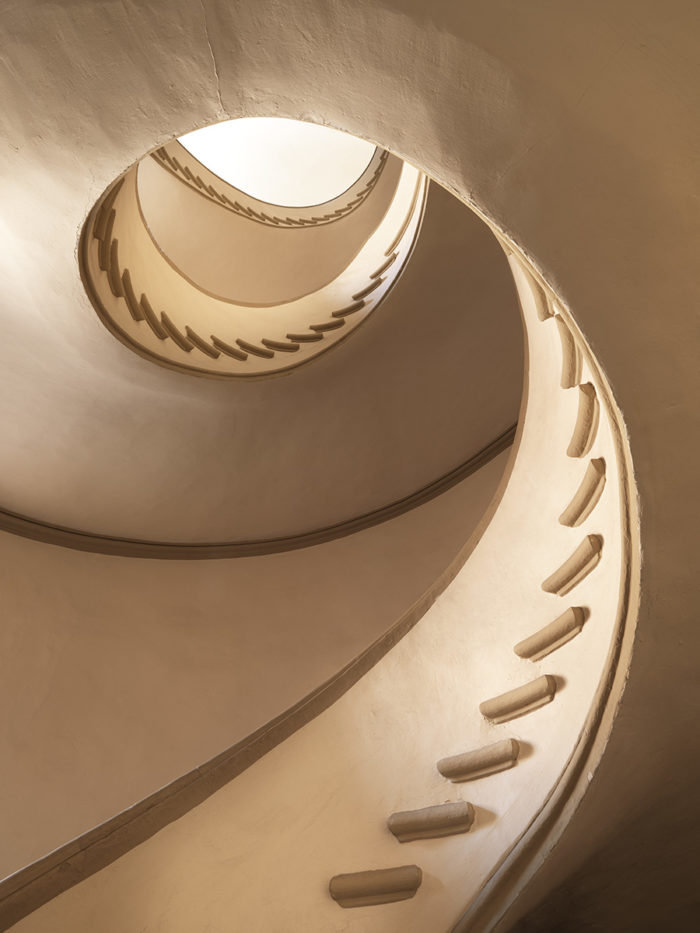
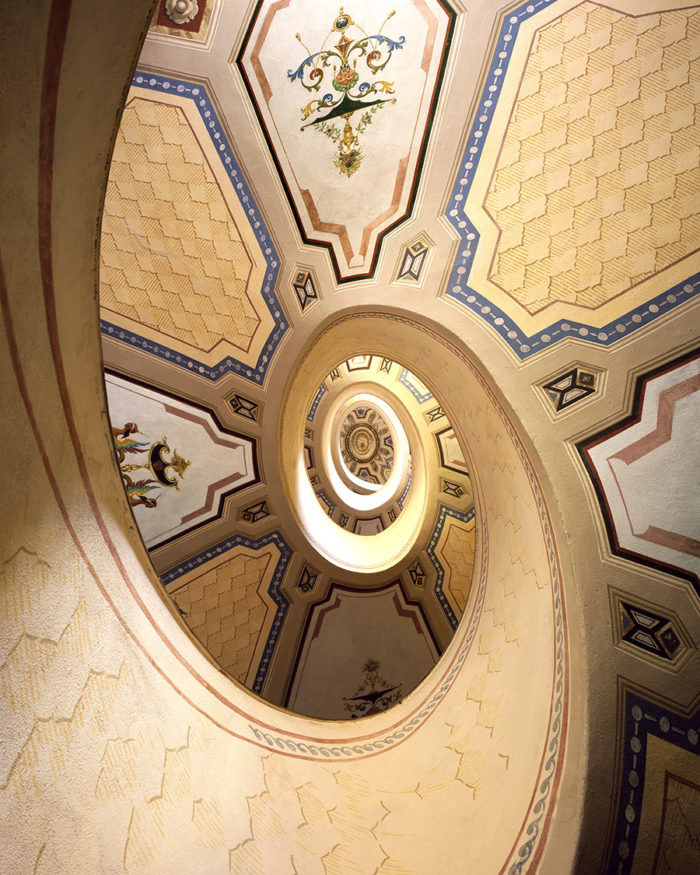
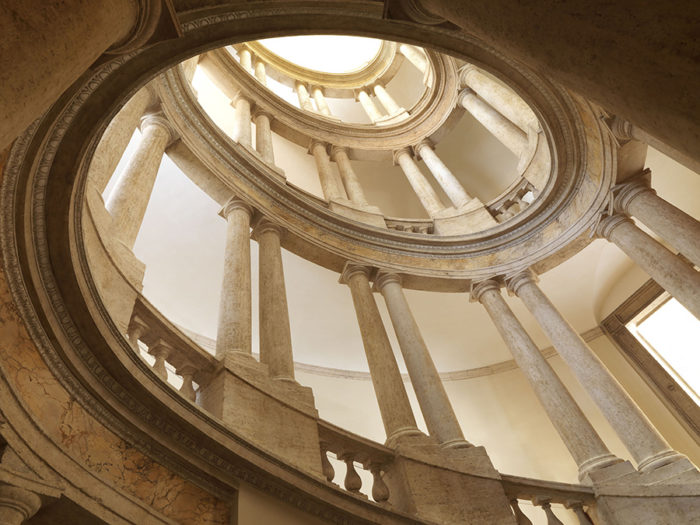
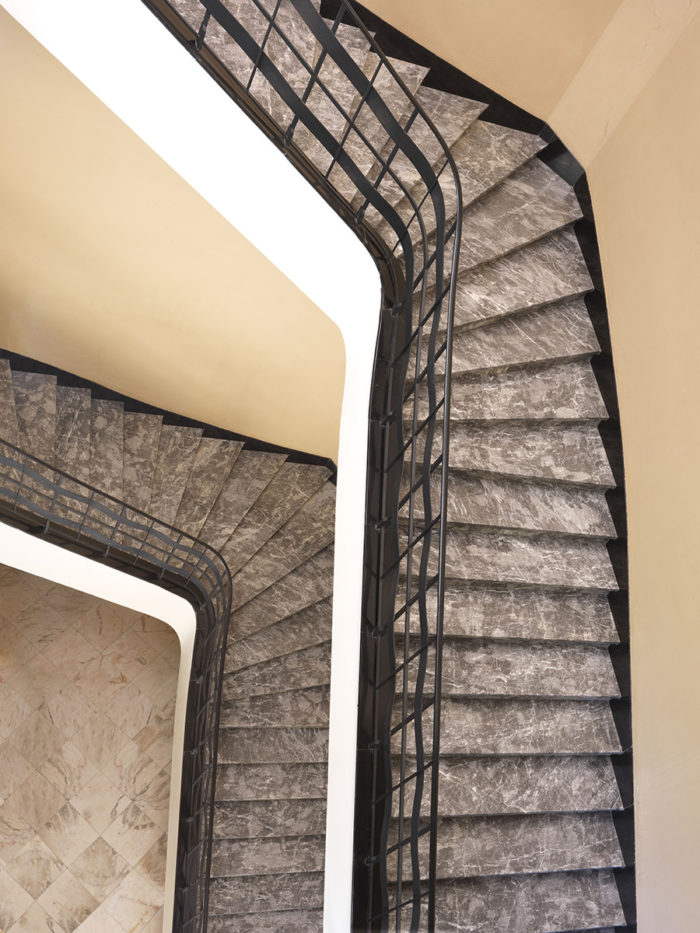
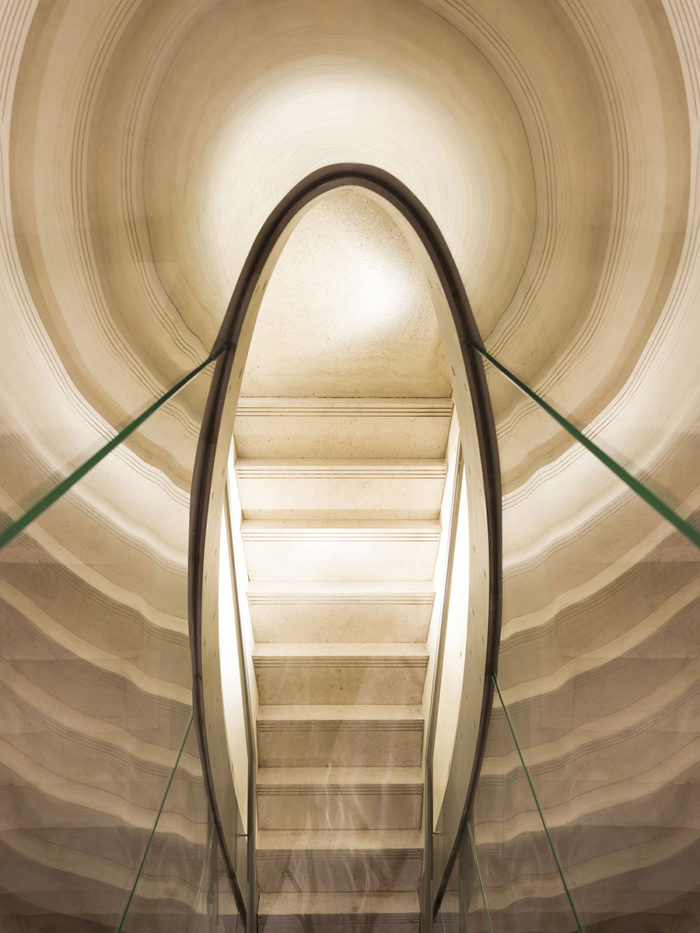
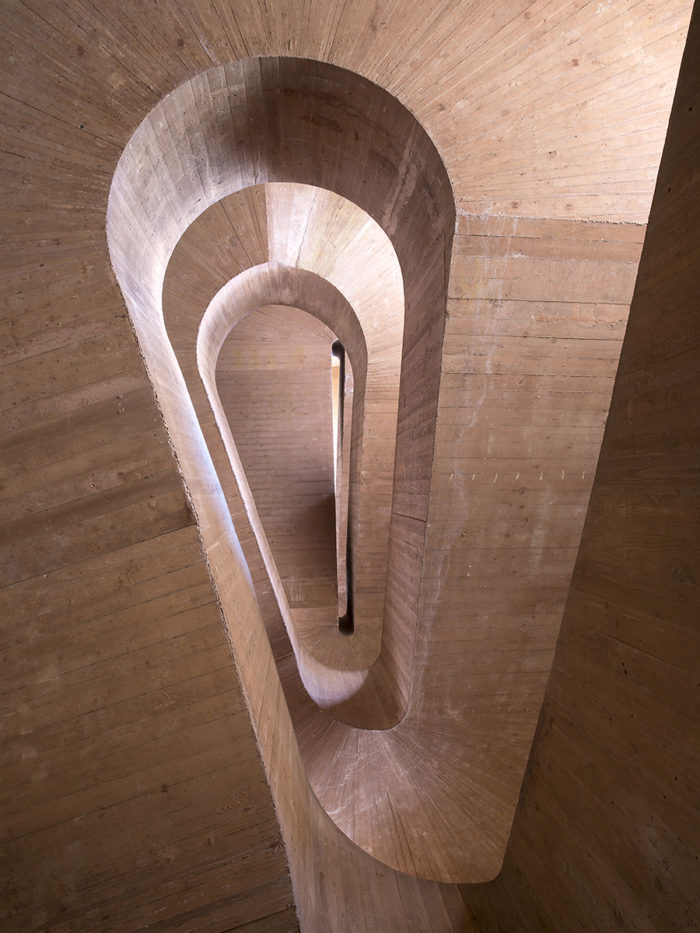
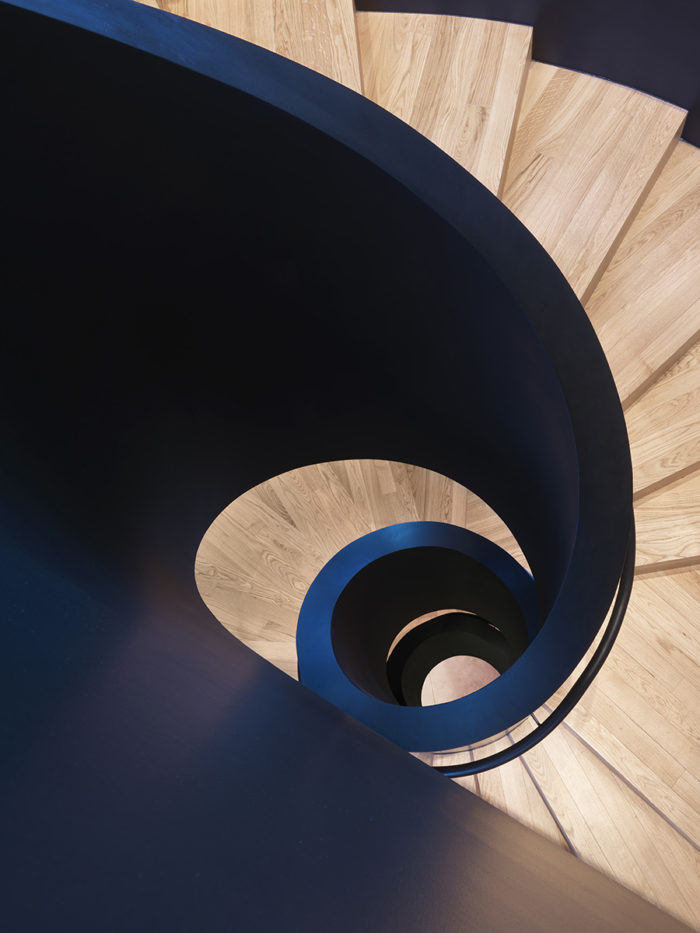
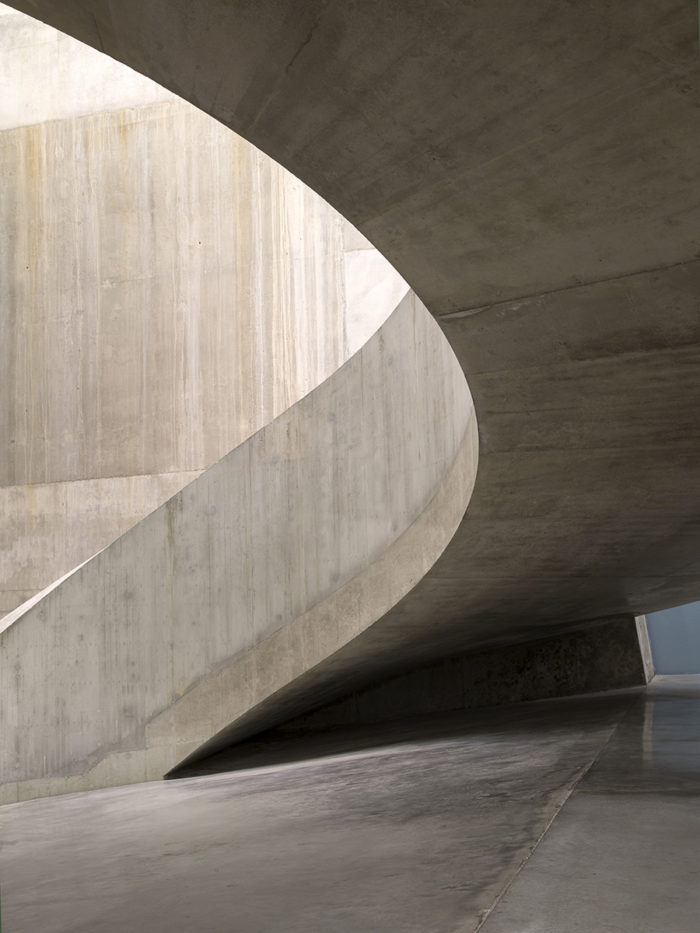
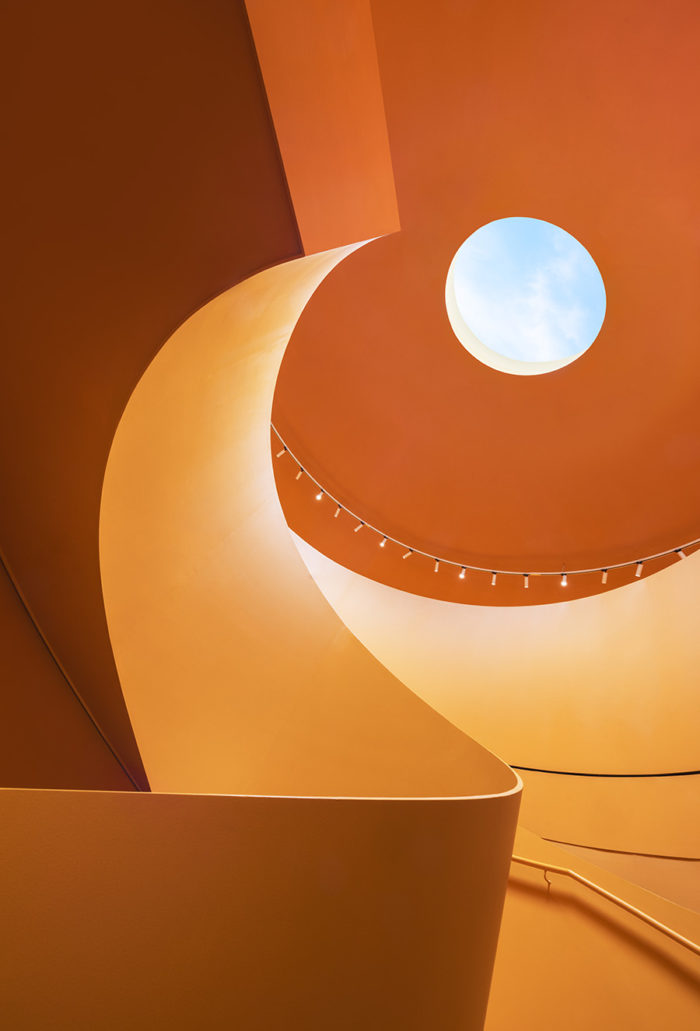
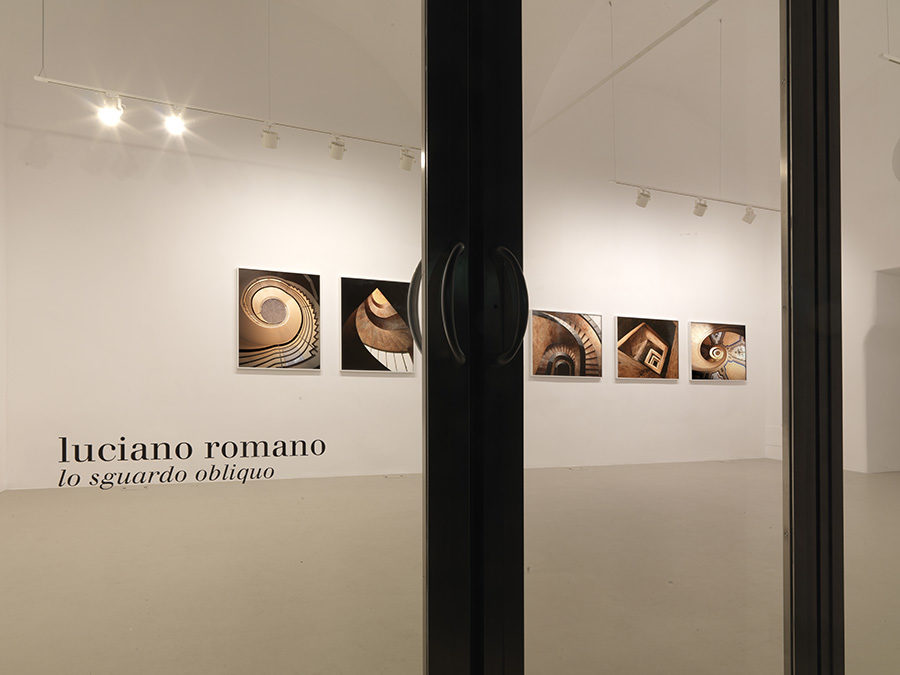
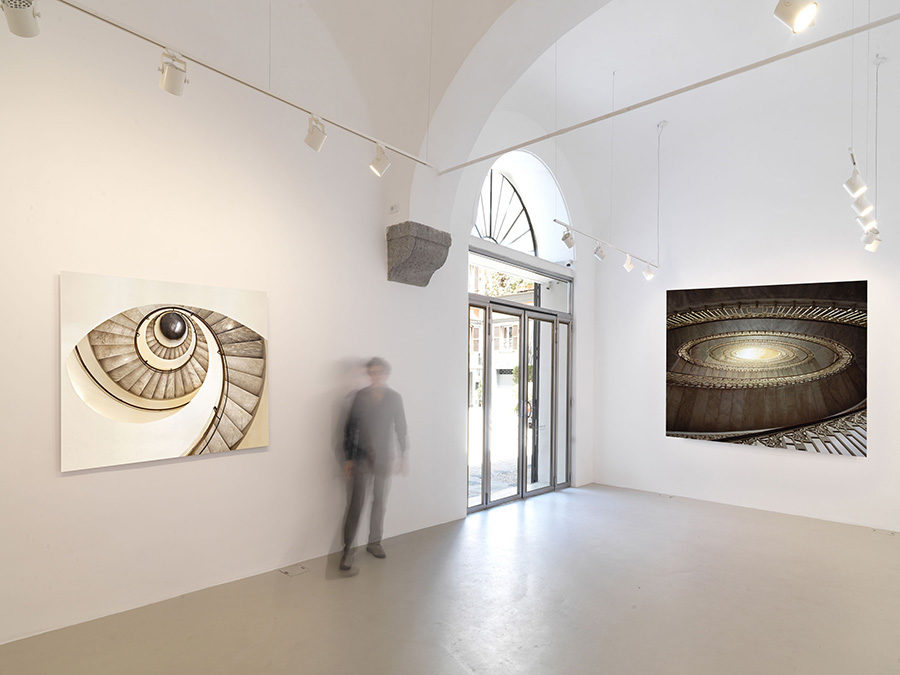
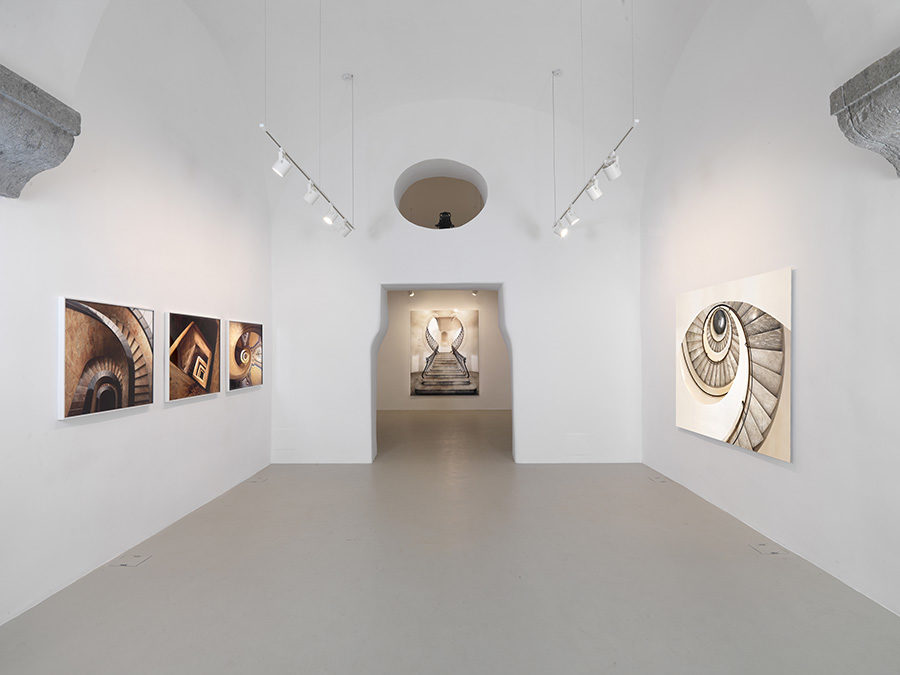
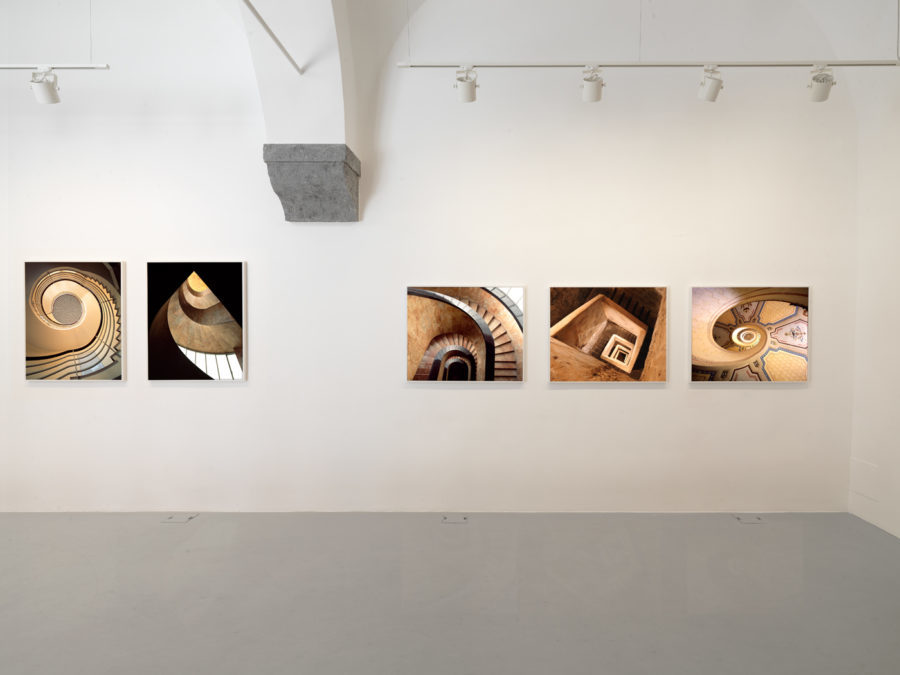
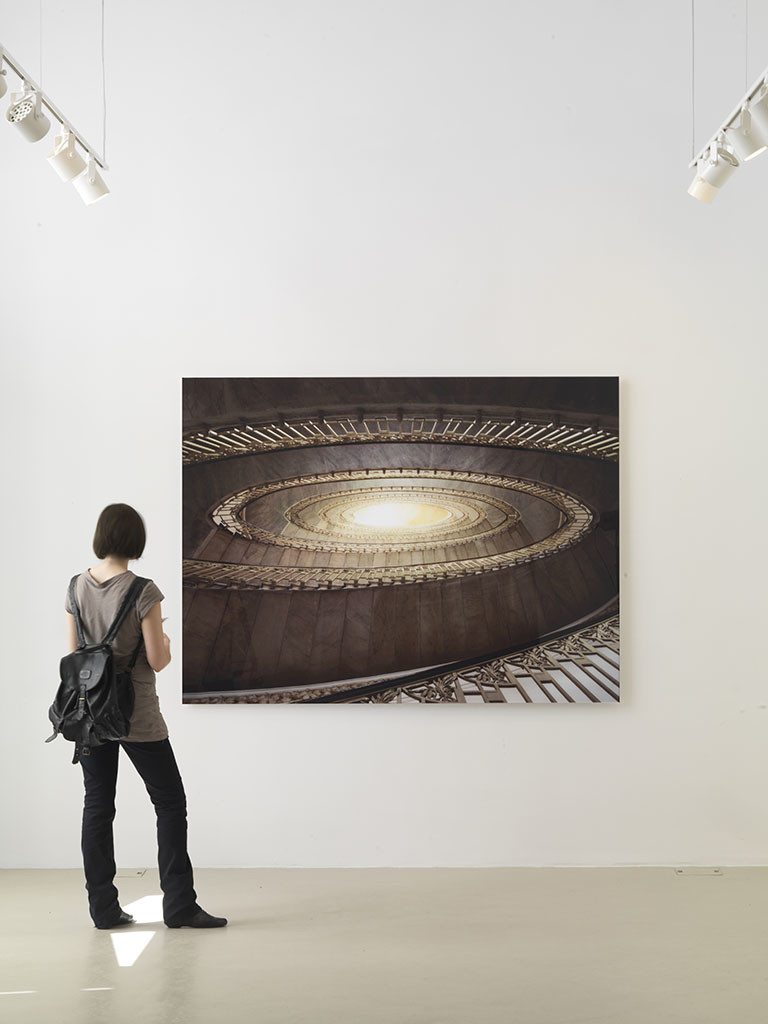
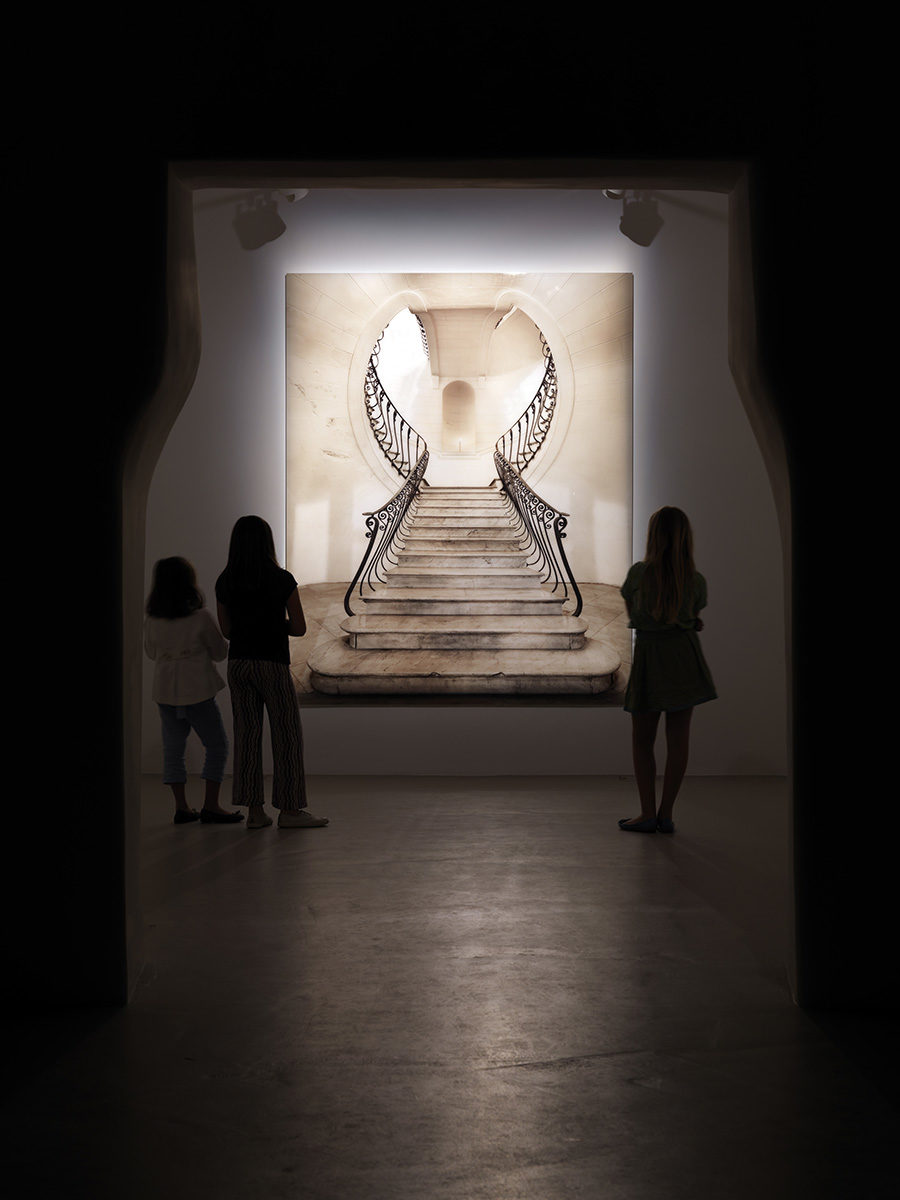
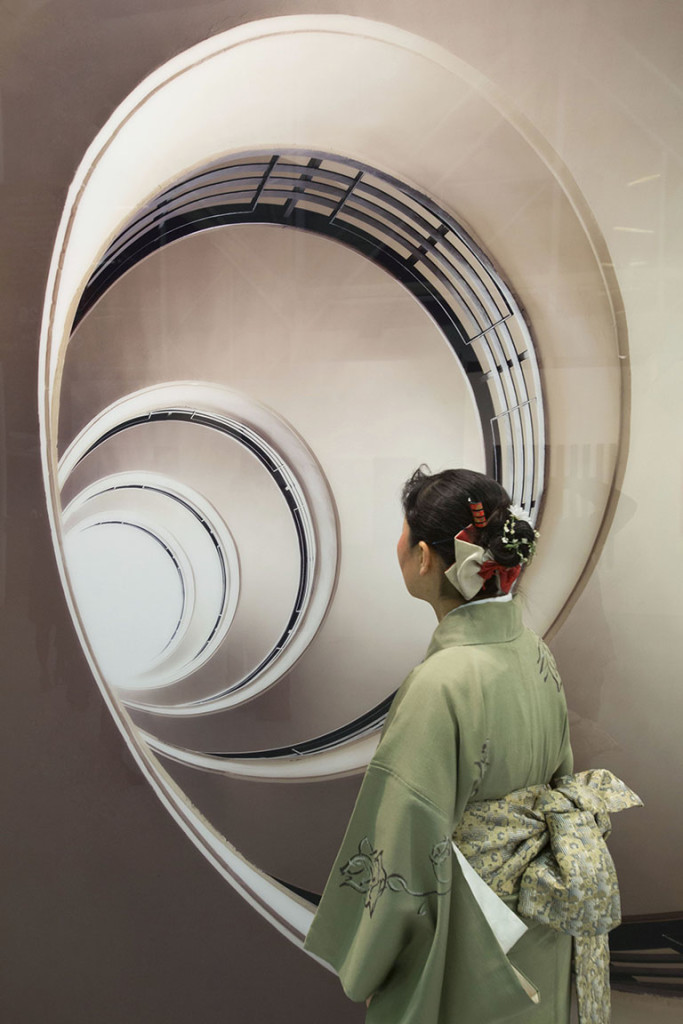
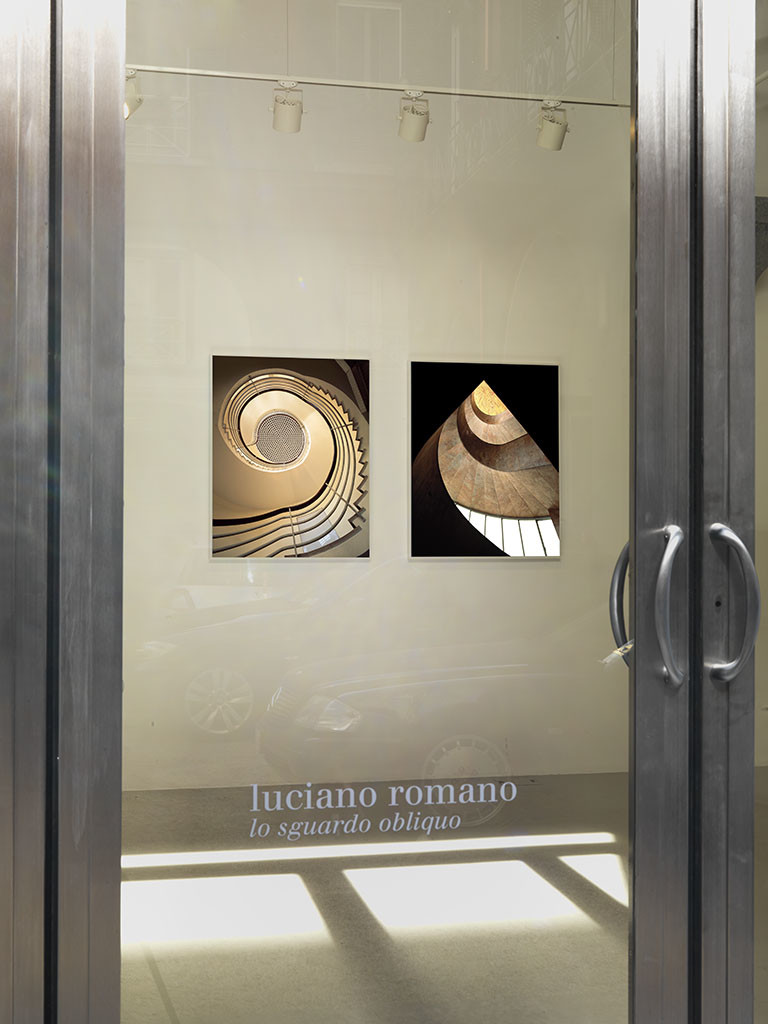
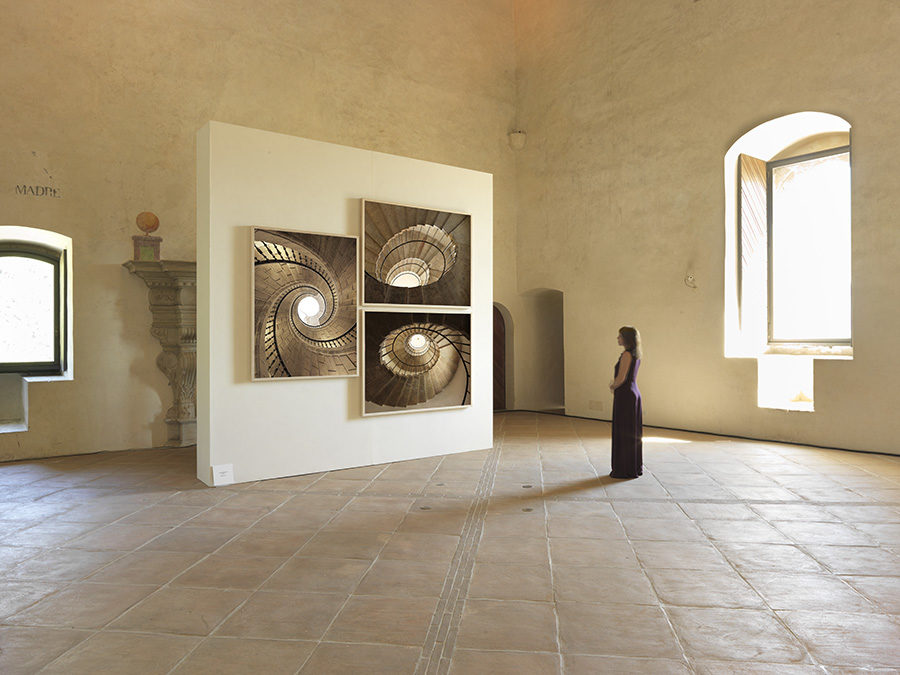
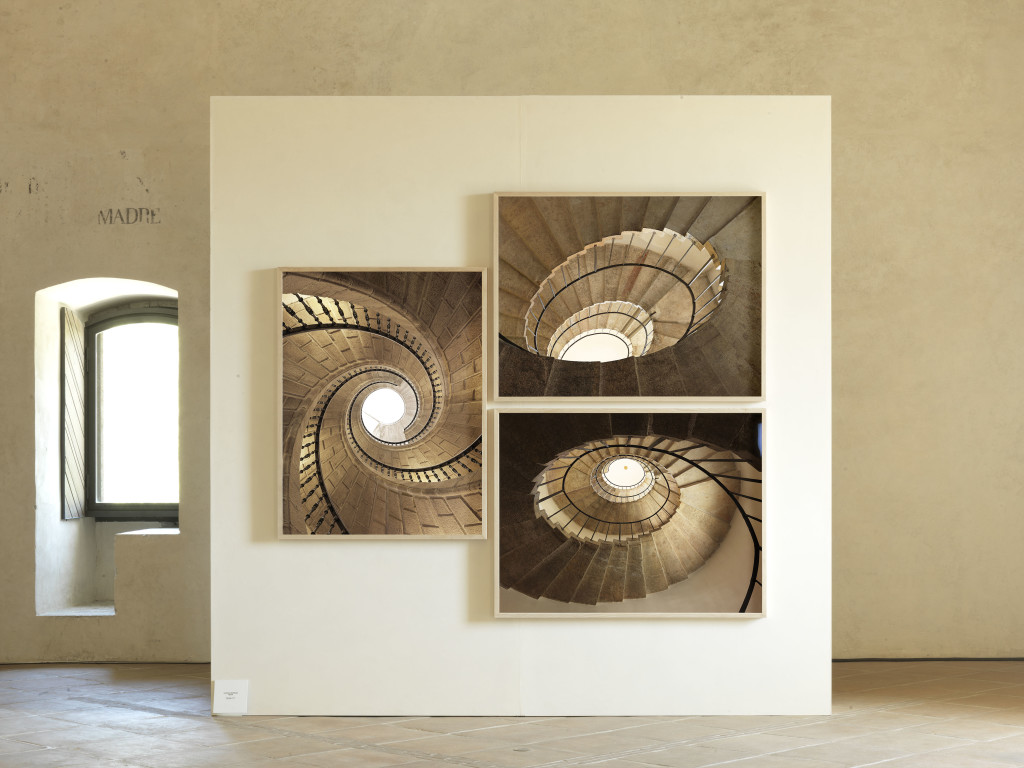
The oblique look
A staircase is the perfect metaphor for human action: transforming nature and building the world in our own image, striving towards the absolute and the transcendent, and challenging the law of gravity by starting from the weight and the opacity of stone and aiming for the brightness of the sky. Linked, as they are, to the ground, stairs follow one another in a rhythmic, stately progress, a clear demonstration of man’s impossibility of evading the laws of physics. But they are also the tangible sign of our ambition to overcome our limits, as are the Towers of Babel we aim to erect as a symbol of our greatness over the course of time. Yet, however magnificent and structured our stairs are, however inspired by complex geometries and the fantastic forms of nature, or by monumental settings created to underline the distance between the human and the divine, or between the humble and the powerful, they invariably maintain an intimate and direct relationship with our bodies, which tread, cross and measure them with our steps. Climbing a staircase—who knows why we imagine stairs as rising since they also descend—is an experience that often brings on a sense of anxiety, expectation and suspense, as though we were passing through an attractive yet mysterious place of transition, an imaginary boundary between objective reality and its image charged with emotions stored deep within our memory. Stairs are the threshold of our becoming, ascent and progress. They are functional constructions created to connect different storeys and, as such, they become the symbolic link between the various levels of consciousness. They are enchanting mystical spirals, sites of the soul, like Jacob’s ladder to Heaven, the passage between matter and the spirit made evident by the conflictual alternation between light and shade. Photography is the language best suited to describe this process of transfiguration: it captures and disorients our eye in an unpredictable interplay of light, geometric representation of the visible world and a persistent dreamlike vision. In photographic stills, the elements of reality yield to the obsessive confusion of mental images, revealing forms that follow on from one another with hypnotic regularity, flights that wind upwards towards a dazzling brightness or which dive into the darkness of a bottomless pit. Physical spaces that hint at states of mind.
Lo sguardo obliquo
Le scale sono la perfetta metafora dell’azione umana: trasformare la natura e costruire il mondo a propria immagine, tendere all’assoluto e al trascendente, sfidare la legge di gravità partendo dalla pesantezza e dall’opacità della pietra per mirare alla luminosità del cielo. Legati come sono alla terra, i gradini si succedono con andamento ritmico e solenne, dimostrazione evidente dell’impossibilità dell’uomo di sottrarsi alle leggi della fisica, ma anche il segno concreto dell’ambizione di superare i propri limiti,come insegnano le Torri di Babele che ogni epoca ha volutoerigere a simbolo della propria grandezza. Eppure, per quanto le scalinate siano grandiose e articolate, ispirate a complesse geometrie, alle forme fantastiche della natura, oppure a monumentali scenografie create per rimarcare la distanza tra l’umano e il divino, e tra l’umile e il potente, esse conservano invariabilmente un rapporto intimo e diretto con il nostro corpo che le percorre, le attraversa, le misura col proprio passo. Salire una scala – la scala chissà perché la immaginiamo in salita, per quanto vada attraversata anche nel senso contrario – è un’esperienza che provoca spesso un senso di ansia, di attesa, di sospensione; come percorrere un misterioso e attraente luogo di transizione, un’ideale linea di confine tra la realtà oggettiva e la sua immagine carica di emozioni sedimentate nella memoria. Le scale sono la soglia del divenire, dell’ascesa, del progresso; costruzioni nate per il collegamento funzionale tra i diversi piani diventano il tramite simbolico tra i diversi livelli della coscienza; mirabili spirali mistiche, luoghi dello spirito che rimandano alla Scala del Paradiso sognata da Giacobbe, il passaggio tra la materia e l’anima reso evidente dal conflittuale alternarsi di luce e ombra. La fotografia è il linguaggio che meglio si adatta a raccontare questo processo di trasfigurazione, cattura lo sguardo e lo disorienta in un imprevedibile gioco combinatorio tra la lucida, geometrica rappresentazione del mondo visibile e la ricorrente visione onirica. Nei fotogrammi gli elementi della realtà cedono il passo alle vertigini ossessive delle immagini mentali, rivelando forme che s’inseguono con andamento ipnotico, rampe che si avvolgono verso un chiarore abbagliante o che sprofondano nel buio di una voragine senza fondo. Spazi fisici che alludono a stati d’animo.
